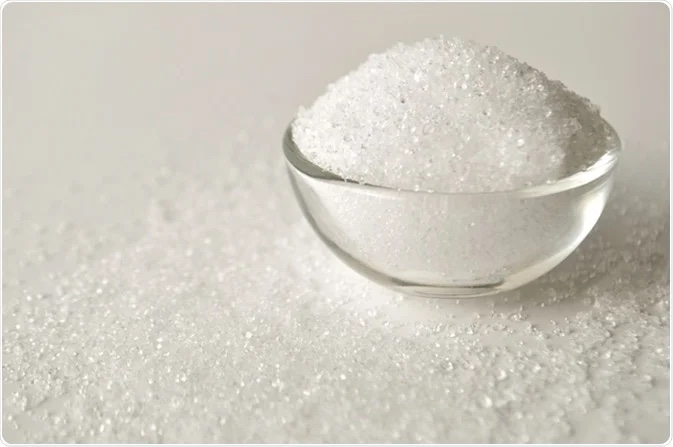Xylitol is a sugar alcohol commonly used as a sweetener in various food products, dental care items, and sugar-free gum. It is often marketed as a healthier alternative to traditional sugar due to its lower glycemic index and potential dental benefits. While xylitol is generally considered safe for most people, it can cause side effects, particularly when consumed in excessive amounts. This article will explore the side effects associated with xylitol consumption, the factors that contribute to these effects, and recommendations for safe use.
What Is Xylitol?
Xylitol is a naturally occurring sugar alcohol found in various fruits and vegetables, including berries, oats, and mushrooms. It is often extracted from birch trees or corncobs for commercial use. Xylitol has a sweetness comparable to that of sucrose (table sugar) but contains fewer calories—approximately 2.4 calories per gram compared to sugar’s 4 calories per gram. This lower calorie content, combined with its ability to prevent tooth decay, has made xylitol a popular choice in many health-conscious products.
Common Side Effects of Xylitol
While xylitol is generally regarded as safe, particularly in moderate amounts, it can cause several side effects, especially when consumed in large quantities. Here are the most commonly reported side effects:
- Gastrointestinal Distress
One of the most significant concerns associated with xylitol consumption is gastrointestinal distress. Since xylitol is not fully absorbed by the body, it can ferment in the intestines, leading to various digestive issues. Common symptoms include:
- Bloating: The fermentation of xylitol in the gut can produce gas, leading to a feeling of fullness and discomfort.
- Diarrhea: High doses of xylitol can have a laxative effect, resulting in loose stools or diarrhea. This is particularly pronounced in individuals who consume large amounts or those not accustomed to sugar alcohols.
- Cramping: Abdominal cramping may occur due to increased gas production and changes in gut motility.
- Allergic Reactions
Although rare, some individuals may experience allergic reactions to xylitol. Symptoms may include:
- Skin Reactions: Rashes, itching, or hives can occur in sensitive individuals.
- Respiratory Issues: Some people may experience difficulty breathing, nasal congestion, or other respiratory symptoms following xylitol consumption.
- Hypoglycemia in Dogs
Xylitol is extremely toxic to dogs, causing a rapid release of insulin and leading to hypoglycemia (low blood sugar). Symptoms of xylitol poisoning in dogs may include:
- Weakness or lethargy
- Loss of coordination
- Vomiting
- Seizures
- In severe cases, xylitol ingestion can lead to liver failure or death.
Pet owners should be cautious about keeping xylitol-containing products out of reach and ensuring that they do not feed their pets anything containing xylitol.
Factors Influencing Xylitol Side Effects
Several factors can influence how xylitol affects an individual:
- Amount Consumed: The side effects of xylitol are more likely to occur with higher intake levels. Moderate consumption, generally around 10-20 grams per day, is often well-tolerated by most people.
- Individual Sensitivity: Some individuals may have a higher sensitivity to sugar alcohols and may experience gastrointestinal distress even with small amounts of xylitol.
- Dietary Habits: Those who are not used to consuming sugar alcohols may be more prone to side effects when first incorporating xylitol into their diets.
- Pre-existing Conditions: Individuals with certain gastrointestinal conditions, such as irritable bowel syndrome (IBS) or inflammatory bowel disease (IBD), may be more susceptible to the side effects of xylitol.
Recommendations for Safe Consumption
To minimize the risk of side effects when consuming xylitol, consider the following recommendations:
- Start Slowly: If you are new to sugar alcohols, introduce xylitol gradually into your diet. This allows your digestive system to adjust to the new substance and may help prevent gastrointestinal distress.
- Monitor Your Intake: Be mindful of the total amount of xylitol you consume in a day. Aim for moderate consumption, ideally around 10-20 grams, to minimize the risk of side effects.
- Stay Hydrated: Drinking plenty of water can help ease any digestive discomfort associated with xylitol consumption.
- Read Labels: Check the ingredient list of products for xylitol, especially in sugar-free candies, gum, and baked goods. Being aware of hidden sources of xylitol can help you manage your intake.
- Consult a Healthcare Professional: If you have any pre-existing health conditions or experience significant side effects after consuming xylitol, it’s essential to consult with a healthcare professional for personalized advice.
Xylitol can be a beneficial alternative to sugar for many individuals, offering sweetness with fewer calories and potential dental health benefits. However, it is not without side effects. Gastrointestinal distress is the most common concern, particularly when consumed in excess. Individuals should be mindful of their xylitol intake and consider their personal sensitivity to sugar alcohols. By following safe consumption practices, most people can enjoy xylitol without adverse effects, while pet owners must remain vigilant about keeping xylitol away from their furry companions.















